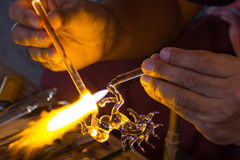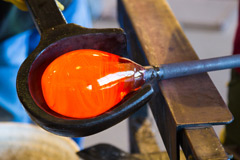
Blue Line
707 105 555
Glass

COMBUSTION
Combustion is more efficient by reducing the amount of nitrogen and increasing the amount of oxygen. Oxygen improves the overall efficiency of the melt and can increase the furnace capacity by 10 to 25% with a low investment. It also reduces the environmental impact.

BLANKETING
In the manufacture of flat glass, the tin bath must be protected from oxidation by preventing tin from contacting atmospheric oxygen through a controlled atmosphere of Argon and Hydrogen. Without oxidation, there is no risk of contamination of the glass surface, improving its quality and reducing the consumption of molten tin to a minimum.

BUBBLES
Depending on the type of glass, Oxygen or Nitrogen is injected to replace atmospheric air. The injected gas allows to maintain a stable convection in the molten glass, leading to a more stable heat transfer, resulting in the elimination of bubbles in the glass.

ISOLATION OF WINDOWS
The insulation with double or triple glazing with gas preserves energy and prevents noise. For the reduction of the noise is important the gas density, because the bigger the mass per area, the better the results. The gases used pure or in mixtures are Sulfur Hexafluoride and Krypton. To avoid heat loss through the windows, Argon and Krypton are used.